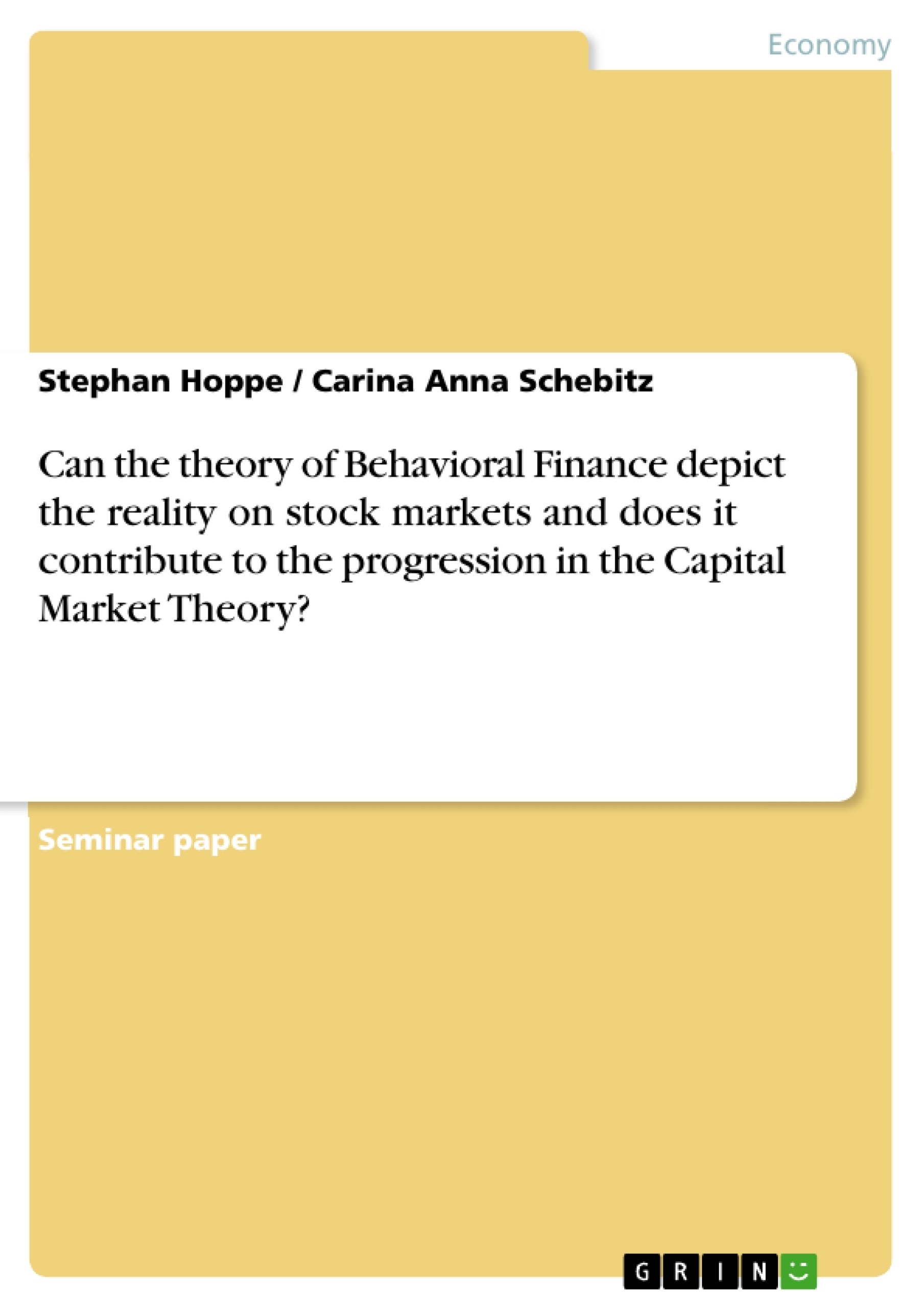"The Portfolio Theory" by Harry Markowitz, the "Capital Asset Pricing Model" by William Sharpe and the concept of the "Homo Oeconomicus" of Adam Smith – all of these models that are taught to business students and referred to by financial specialists all over the world are based on the assumption of the fundamental efficiency of markets.
Market analysts build their substantial economic and financial predictions on the supposition that investors and corporations always behave and decide rationally. Consequently there would not be a chance that manias, panics or crashes ever occur. Nevertheless there were various speculation bubbles in the past such as the 1929 Stock-market-crash, the Dot-com bubble starting 1997 and the US-Subprime crisis as of 2007.
So stock prices show fluctuations that cannot be only elucidated by economic factors. Moreover there are studies that come to the conclusion that there is only a low correlation between share prices and fundamental data. Concomitant new research approaches deployed that either developed the existing models further or even created a complete paradigmatic change. Nowadays when it comes to explaining the occurrences on the stock markets the field of psychology and the behavioral science gain in relevance.
However the following question arises: Can the theory of Behavioral Finance depict the reality on stock markets and its participants and does it make a contribution for the progression in the Capital Market Theory?
Yet there are some approaches that attempted to answer this question but there is no scientific consensus about it. Hence this term paper should accomplish a concise but fundamental contribution for the contemplation of this topic.
Inhaltsverzeichnis (Table of Contents)
- 1 Introduction
- 1.1 Problem Description and Objectives
- 1.2 Scope of Work
- 2 Theoretical Background
- 2.1 Basic Assumptions of Neoclassical Capital Market Theory
- 2.2 Dissociation of Behavioral Finance as a Theory
- 2.2.1 Availability Heuristic
- 2.2.2 Herding
- 3 Dot-com Bubble
- 3.1 Historical Background Information
- 3.2 Critical Analysis based on Neoclassical Capital Market Theory and Behavioral Finance
- 4 Conclusion
- 4.1 Target Achievements
- 4.2 Prospects
Zielsetzung und Themenschwerpunkte (Objectives and Key Themes)
This term paper aims to critically analyze the theory of Behavioral Finance and assess its relevance in explaining stock market phenomena, particularly in relation to the Dot-com bubble. It examines how Behavioral Finance challenges the basic assumptions of the Neoclassical Capital Market Theory, which relies on the concept of rational investors and efficient markets.
- Behavioral Finance as a theory
- Neoclassical Capital Market Theory
- The Dot-com bubble
- The role of investor psychology and behavior
- The implications for market efficiency and prediction
Zusammenfassung der Kapitel (Chapter Summaries)
- Chapter 1 introduces the topic of Behavioral Finance and outlines the paper's objectives. It highlights the limitations of traditional economic models in explaining market anomalies like speculative bubbles.
- Chapter 2 provides a theoretical foundation by explaining the basic assumptions of the Neoclassical Capital Market Theory and introduces Behavioral Finance as a contrasting theory. It discusses concepts like the Availability Heuristic and the theory of Herding, which explain how investor behavior deviates from rational expectations.
- Chapter 3 delves into the Dot-com bubble, providing historical background information and analyzing it through the lenses of both Neoclassical and Behavioral Finance perspectives. This chapter examines the role of psychological factors and market inefficiencies in contributing to the bubble's formation and subsequent burst.
Schlüsselwörter (Keywords)
The main keywords and focus topics of this term paper include Behavioral Finance, Neoclassical Capital Market Theory, market efficiency, investor rationality, speculative bubbles, Dot-com bubble, Availability Heuristic, Herding, and psychological factors in financial decision-making.
- Citar trabajo
- Stephan Hoppe (Autor), Carina Anna Schebitz (Autor), 2015, Can the theory of Behavioral Finance depict the reality on stock markets and does it contribute to the progression in the Capital Market Theory?, Múnich, GRIN Verlag, https://www.grin.com/document/384956



